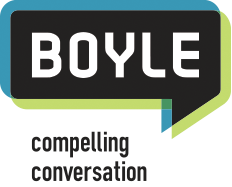“Crisis Communications on the Cutting Room Floor” Part II
In Part I of this series, “Setting the Trap,” we looked at a real example of a company that fell for the interview trap, not once, but twice! What fundamental error did the CEO make? She agreed to do taped interviews. By providing 20 or 30 minutes of dialogue for the producers to slice and dice according their agendas, she just gave them more rope to hang her. As a long-time veteran of national TV news revealed, “If we are going to go to the trouble and expense of taping and editing an interview to fit into a news story, it’s because we’ve already determined what the story is going to be and we’re just looking for quotes – or pieces of quotes – to support it.”
So, how can you present your company’s case to the public without submitting to taped interviews? Enthusiastically offer up your CEO for interviews. These allow him/her much more control and eliminate the risk of having statements edited out or out of context. And, they can actually be an easier “pitch” to TV stations.
Controlling a Live TV Interview
The restricted length of a live interview forces the reporter to react quickly to the CEO’s answers, rather than to leisurely interrogate him/her. This prevents the interviewer from indulging in trapping techniques, such as asking the same question repeatedly, paraphrasing statements incorrectly, “leading the witness,” etc. If the reporter attempts any of these in a live interview, a quick mono-syllabic answer is sure to force him or her to change tack in order to keep the conversation flowing. (Dead air is your CEO’s secret weapon – the reporter will do anything to fill it, including allowing him/her to resume reciting talking points.)
Preparing for a Live TV Interview
Live interviews for segments that range from two to four minutes in length mean that the questions are likely to be obvious ones that your CEO can anticipate, practice bridging from to key talking points, and with practice, deliver conversationally and concisely.
Pitching a Live TV Interview
The media may be hoping for a taped interview (for obvious reasons, we now know!) so you may need to remind them of the following “benefits” of live interviews:
- Live TV seems more exciting to viewers. And TV crews’ hope that they might actually be more exciting (i.e., something unscripted could happen). So, what can you do to exploit this desire? Offer up great visuals, like having the CEO speak in front of the disputed housing development (as in the case in Part I) or on the floor of the closing factory. The station will anticipate capturing tension, but you will have prepared your CEO to reflect just the opposite.
- Live TV is MUCH less labor intensive and expensive for the stations to produce. It requires roughly three people (a cameraman, producer and editor) and five hours of labor to produce a packaged news story. So, if you can offer to “save them money” by taking the CEO to the local affiliate for a live interview, or if your company has the in-house capability for a remote interview (this has become relatively inexpensive and more common), the producer may have a hard time justifying otherwise to the station management
- In a real crisis, it’s a seller’s market. If all else fails, you can say that your CEO only has enough time to do a live interview. If the TV producer doesn’t bite, one at another TV affiliate might.
While live interviews don’t guarantee a great story, they are far less risky than taped interviews. Not only does your boss have more control, but he/she can get through the interview faster and get back to dealing with the real crisis! And you won’t spend the next several days alternately berating yourself for the quotes that didn’t get on air or defending yourself against the ones that did.
Bottom line: While goal is control and satisfied stakeholders, the media thrives on sensation and controversy. Don’t feed the beast!
